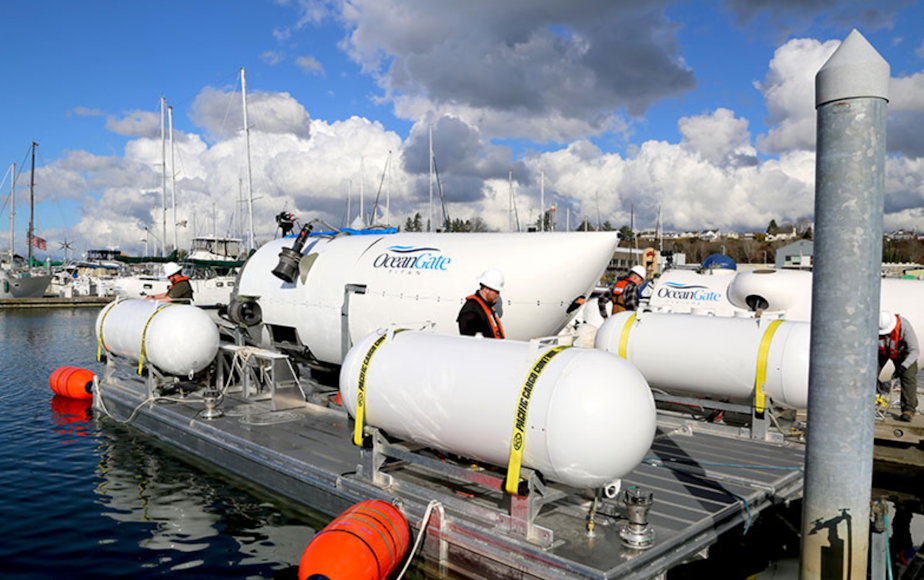The Titanic tourist sub was built by a Seattle man's Everett-based company

The clock is ticking ominously as rescue crews surveil the North Atlantic for a possible sighting of the Titan, a unique submersible watercraft that was built by OceanGate Inc., an Everett, Washington, company.
The vessel's captain is Stockton Rush, CEO of OceanGate and a Seattle resident who records show lives in Madison Valley.
The Titan descended into frigid Atlantic waters on Sunday with five people aboard — it has been described as a van without seats with a bubble window at the end for viewing. Those aboard hoped to see wreckage of the Titanic, which sank in 1912.
Rush uses a repurposed videogame controller to drive the Titan down to the Titanic wreckage spot, which is submerged 2.4 miles below sea level.
The sub has a 96-hour oxygen supply (four days) for five people and is expected to run out of breathable air by Thursday morning.
The University of Washington's Applied Physics Laboratory worked with Rush and OceanGate from 2013 to 2020, a spokesperson said. They worked on an earlier version of the sub, a shallow diving submersible called CYCLOPS.
Adam Summers, a professor at UW's School of Aquatic and Fishery Sciences, described the thrill of going to the bottom of the Salish Sea with CYCLOPS. Stockton Rush piloted the vessel.
"If you had asked me, at the end, how long I've been down, I would have said 10 minutes," Summers said. "It was three and a half hours."
It was worth the risk, he continued.
"It was completely worth the price of admission to see the stuff we saw," Summers said. "I would have gone again in a heartbeat. I mean, if I'd had the resources and they'd been able to offer me a trip on the Titan, I would have been on the Titan. I absolutely had confidence in their safety ability."
The UW was not involved with the design, engineering, or testing of the Titan sub, the spokesperson said. The Boeing Company worked with OceanGate and the UW on initial design analysis.
Rush is an amateur diver who moved to Seattle in 1990, according to a University of Washington press release related to CYCLOPS.
Sponsored
Rush “became involved with submarines as a way to explore the Pacific Northwest marine environment without having to deal with the cold water and cumbersome dry suits.”
The press release continues: “When he discovered that subs-for-hire were in short supply, he bought an unfinished sub and finished it for his own use.”
According to Rush’s biography on the OceanGate Inc. website, he was a pilot and served on the board of directors for Seattle’s BlueView Technologies, a manufacturer of small, high-frequency sonar systems.
He also served as a trustee for the Museum of Flight in Seattle. He has a bachelor’s in aerospace engineering from Princeton University and an MBA from U.C. Berkeley Haas School of Business, according to his biography.





